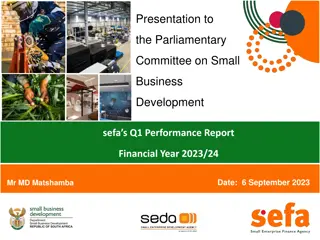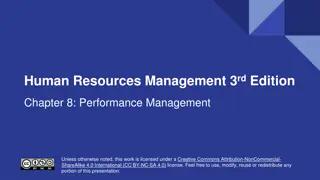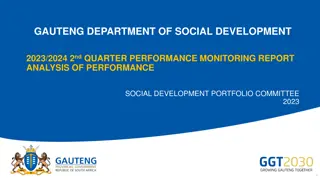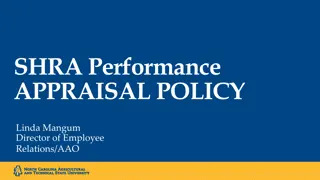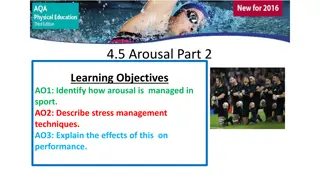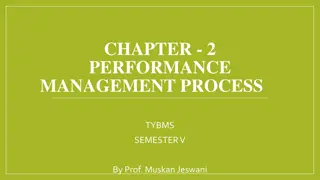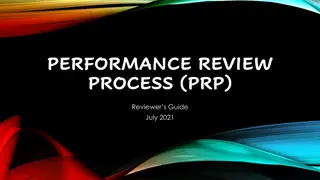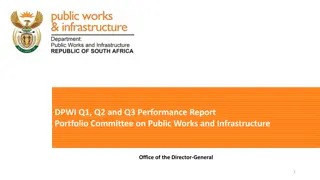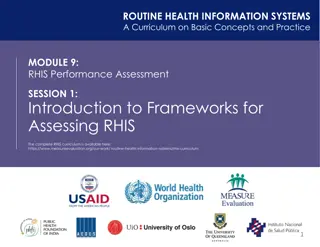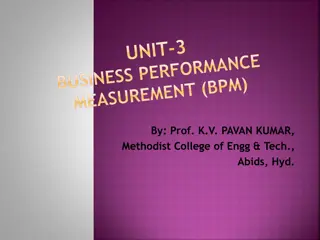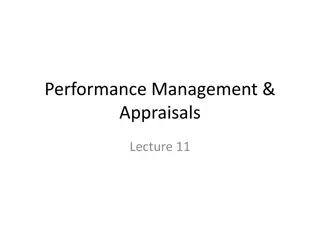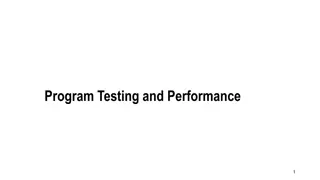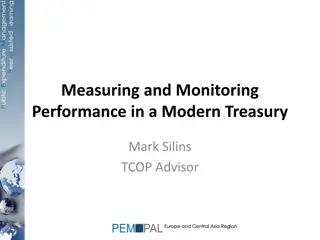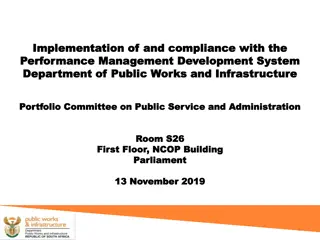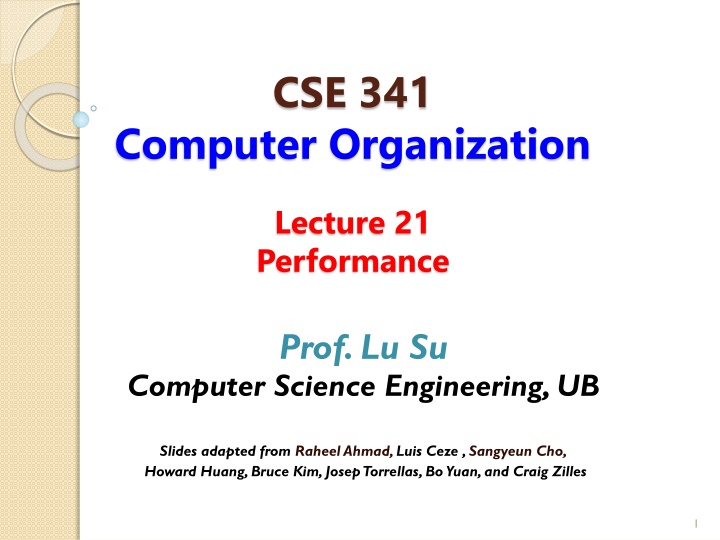
Computer Performance Metrics in Computer Organization
Explore the importance of performance metrics in computer organization, including how vendors manipulate metrics, comparing performance in different scenarios like with planes, and defining key performance terms like response time and throughput.
Download Presentation

Please find below an Image/Link to download the presentation.
The content on the website is provided AS IS for your information and personal use only. It may not be sold, licensed, or shared on other websites without obtaining consent from the author. If you encounter any issues during the download, it is possible that the publisher has removed the file from their server.
You are allowed to download the files provided on this website for personal or commercial use, subject to the condition that they are used lawfully. All files are the property of their respective owners.
The content on the website is provided AS IS for your information and personal use only. It may not be sold, licensed, or shared on other websites without obtaining consent from the author.
E N D
Presentation Transcript
CSE 341 Computer Organization Lecture 21 Performance Prof. Lu Su Computer Science Engineering, UB Slides adapted from RaheelAhmad, Luis Ceze , Sangyeun Cho, Howard Huang, Bruce Kim, JosepTorrellas, Bo Yuan, and Craig Zilles 1
Todays Content in Big Picture SW Part-I Ch2 Part-II Ch3,4 Part-III Ch1,5,6 ch2 ch1 I/O device Ch6 Ch3,4 Ch5 2
Motivation Purchasing Perspective: In a collection of computers, which has the best performance? -- Lowest Price? -- Best Performance/Price? Design Perspective: Faced with different design options, which has the best performance improvement? -- Lowest Cost? -- Best Performance/Cost ? We need -- Basis for comparison -- Metric for evaluation 3
Venders Tricks Computer vendor selects the metrics that can make their products look good. Hence there are many possible definitions of performances. Q: Why do end users need a new performance metric? A: End users who rely only on megahertz as an indicator for performance do not have a complete picture of PC processor performance and may pay the price of missed expectations. 4
An Example from Plane Which plane has better performance? --Time to do the task (Execution Time, Latency, Response Time): more for desktop PCs --Tasks per unit time (Throughput, Bandwidth): more for servers Plane DC to Paris Speed Passengers Throughput (pmph) 286,700 747 6.5 hours 610 mph 470 Concorde 3 hours 1350 mph 132 178,200 5
Definition Performance is in units of things-per-second -- bigger is better Response time of a system Y running program Z Throughput of system Y running many programs " System X is n times faster than Y" means 6
Measuring Performance Time is the measure of computer performance --The one performs the same amount of work in the least time is the fastest. Execution time is measured in seconds per program. -- Different definitions --Wall Clock Time, or elapsed time: the total time to complete a task, including disk accesses, memory accesses, input/output (I/O) etc. -- CPU execution time or simply CPU time: the time the CPU spends computing for this task. It contains user CPU time and system CPU time. System CPU Time The CPU time spent in the operating system performing tasks on behalf of the program. User CPU Time The CPU time spent in the program 7
CPU Clocking Operation of digital hardware governed by a constant-rate clock Clock period Clock (cycles) Data transfer and computation Update state Clock period: duration of a clock cycle e.g., 250ps = 0.25ns = 250 10 12s Clock frequency (rate): cycles per second e.g., 4.0GHz = 4000MHz = 4.0 109Hz
Clock Time and Clock Rate One cycle : the minimum time it takes the CPU to do any work. -- Clock cycle time or clock period is just the length of a cycle. -- Clock rate, or frequency, is the reciprocal of the cycle time. -- Generally, higher frequency is better. Some examples: --A 500MHz processor has a cycle time of 2ns. --A 2GHz CPU has a cycle time of 0.5ns (500ps). 9
CPU Performance For one program Clock Cycles per Instruction (CPI) -- Recall some instructions costlier than some others --Average for all instructions -- Good measure of implementations of same architecture 10
Instructions Executed Instructions executed: -- Not interested in the static instruction count, or how many lines of code are in a program. -- Care about the dynamic instruction count, or how many instructions are actually executed. li sub bne $a0, 1000 $a0, $a0, 1 $a0, $0, L1 L1: 11
CPI CPI: The average number of clock cycles per instruction -- Function of the machine and program. -- Depends on the actual instructions appearing in the program, e.g., a floating-point intensive application may have higher CPI than an integer-based program. -- Depends on the CPU implementation. Pentium can have lower CPI than old 80486, though both of them execute the same instructions. 12
Same ISA, Different Implementation Two 8086-based processors. --An 800MHz AMD Duron, with a CPI of 1.2 for an MP3 compressor. --A 1GHz Pentium III with a CPI of 1.5 for the same program. CPU timeAMD,P= InstructionsP* CPIAMD,P* Cycle timeAMD = = CPU timeP3,P= InstructionsP* CPIP3,P* Cycle timeP3 = = 13
CPI in More Detail If different instruction classes take different numbers of cycles n = i = Clock Cycles (CPI Instructio Count n ) i i 1 Weighted average CPI Clock Cycles Instructio Count n n = i = = CPI CPI i i Instructio Count n Instructio Count n 1 Relative frequency
CPI Example Alternative compiled code sequences using instructions in classes A, B, C Class CPI for class IC in sequence 1 IC in sequence 2 A 1 2 4 B 2 1 1 C 3 2 1 Sequence 1: IC = 5 Clock Cycles = 2 1 + 1 2 + 2 3 = 10 Avg. CPI = 10/5 = 2.0 Sequence 2: IC = 6 Clock Cycles = 4 1 + 1 2 + 1 3 = 9 Avg. CPI = 9/6 = 1.5
Performance Summary The BIG Picture The BIG Picture Instructio ns Clock cycles Seconds = CPU Time Program Instructio n Clock cycle Performance depends on Algorithm: affects IC, possibly CPI Programming language: affects IC, CPI Compiler: affects IC, CPI Instruction set architecture: affects IC, CPI, Tc
Performance Improvement Amdahl s Law Amdahl s Law states that improving an aspect of a computer and expecting a proportional improvement in overall performance. Example, 10% of the program execution time involves floating-point code, how faster if we double the speed of floating-point operations? 17
Exercise (1) New CPU (40%) 10X faster I/O bound server, so 60% time waiting for I/O = 1 Speedup overall Fraction ( ) Fraction + 1 enhanced enhanced Speedup enhanced 1 1 = = . 1 = 56 0.4 . 0 64 ( ) 0.4 + 1 10 Q1: what is the max speedup in this machine? Q2: if we need to speedup by 2X, what can we do? 18
Exercise (2) Q1: CPU 50% -> 3X I/O 10% Memory 40% -> 4X 1 = Speedup overall CPU Memory ( ) CPU + + 1 - Memory Speedup Speedup CPU Memory Q2: CPU 40% -> 0.5X I/O 20% Memory 40% -> 2X 19



